Discover 11 hidden attractions, cool sights, and unusual things to do in León (Spain). Don't miss out on these must-see attractions: León Cathedral, MUSAC, and Casa Botines. Also, be sure to include Convento de San Marcos in your itinerary.
Below, you can find the list of the most amazing places you should visit in León (Castile and León).
Table of Contents
León Cathedral
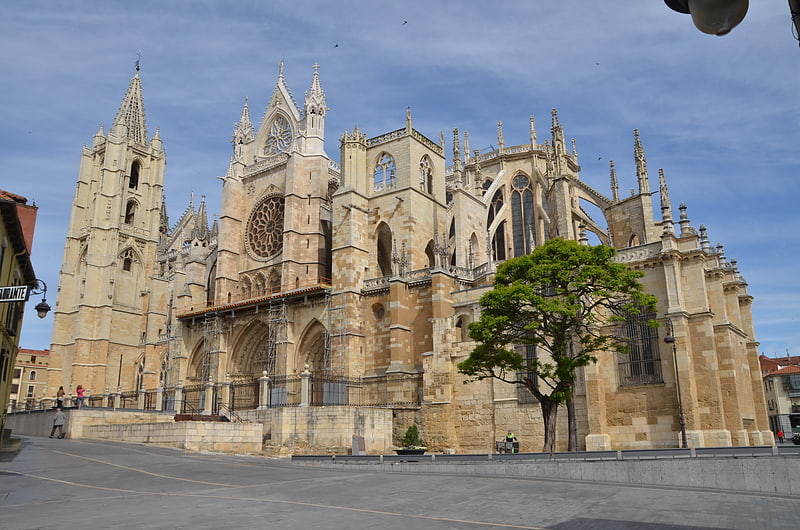
Also known as: Catedral de León
Iconic stained-glass windows and a museum. Santa María de Regla de León Cathedral is a Catholic church, the episcopal see of the diocese of León in north-western Spain, consecrated under the name of the Virgin Mary. It was the first monument declared by the Royal Order of Spain on August 28, 1844
Initiated in the 13th century, it is one of the greatest works of the Gothic style, with French influences. Also known as the Pulchra Leonina, which means ‘Beautiful Leonese,’ it is located on the Way of Saint James, or Camino de Santiago.
The León Cathedral is mostly known for taking the “dematerialization” of gothic art to the extreme, that is, the reduction of the walls to their minimum expression to be replaced by stained glass, constituting one of the largest collections of medieval stained glass in the world.[1]
Address: Plaza Regla, s/n, 24003 León
MUSAC

Also known as: Museo de Arte Contemporáneo de Castilla y León
Contemporary art in avant-garde gallery. The Museo de Arte Contemporáneo de Castilla y León, better known as the MUSAC, is a contemporary art museum in the city of León, Spain.
Inaugurated in April 2005 by Felipe, Prince of Asturias, this cultural institution aims to be a "Museum of the Present", in the words of its curator Agustín Pérez Rubio, and thus only collects artworks from the latest generation of artists, between 1992 and 2012. The museum has won international prestige for its 21st-century collection and innovative programming, being labelled, for example, as "one of the most astonishingly bold museums to hit the Spanish cultural landscape in years" by The New York Times.
The MUSAC building is celebrated for its avant-garde architecture, and it has been awarded a number of prizes, such as the 2007 European Union Prize for Contemporary Architecture. Designed by the architectural studio of Luis M. Mansilla and Emilio Tuñón, the multicolored panels that adorn the exterior of the museum resemble the stained-glass windows of a cathedral. The architects drew their inspiration for this work from the main rose window at the local 13th century Gothic cathedral, Santa María de León.
MUSAC has become a landmark for the city of León, and an emblem of the new 21st century Spanish architecture, as showcased in a 2006 exhibition at the MoMA of New York City, which selected the MUSAC as one of the arquitectural projects that make Spain today "an international center for design innovation and excellence".[2]
Address: Calle Reyes Leoneses 24, 24008 Leon
Casa Botines
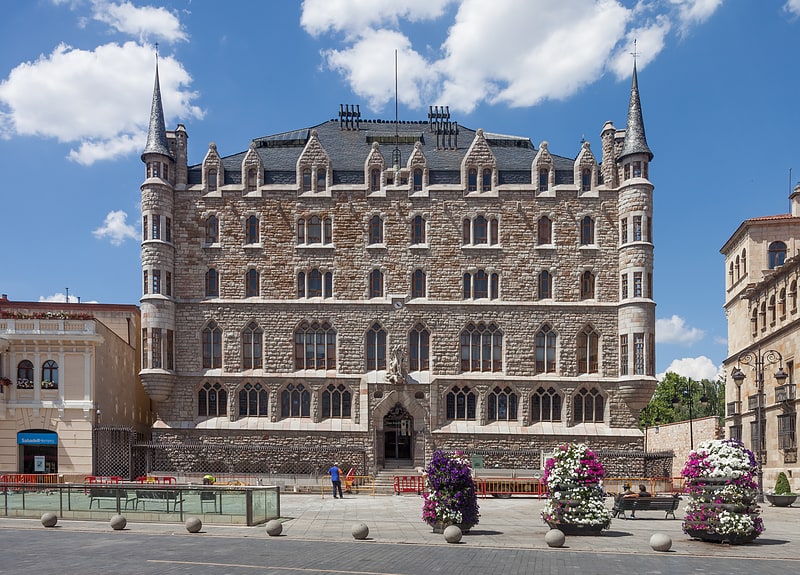
Museum in León, Spain. The Casa Botines is a Modernist building in León, Spain designed by Antoni Gaudí. It currently houses a museum dedicated to Gaudi, Spanish art of the 19th and 20th centuries, and the history of the building itself.
After being built for a fabrics company, it was adapted to serve as the headquarters of a local savings bank (first Caja León, later Caja España).[3]
Address: Plaza de San Marcelo 5, 24003 Leon
Convento de San Marcos
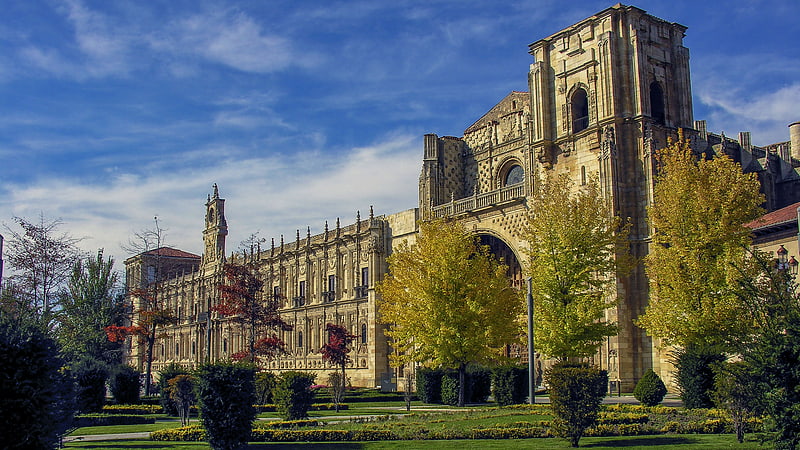
Gothic-style 16th-century church. The Convento de San Marcos was a convent in León, Spain, that is today an operating luxury parador hotel. It also contains a consecrated church and museum, and is one of the most important monuments of the Renaissance in Spain. It is one of the greatest architectural jewels of León, together with the Cathedral, the Basilica of San Isidoro and la Casa Botines. It has a highly ornamental plateresque facade.
The darkest period in the monastery of San Marcos's five centuries of history is concentrated in just four years. During the course of the Spanish Civil War cells, rooms, stables, cloisters, church, choir, museum and every fast corner of the building were transformed into impromptu dungeons or jailers' offices, in what became officially known as "Campo de concentración de San Marcos" (San Marcos concentration camp). Between July 1936 and the end of 1940, up to 7,000 men and 300 women were imprisoned at the same time. It is estimated that, over the entire war and the period immediately following, the number of Republican militia members and political prisoners that passed through its cells totaled some 20,000. In the province of León, around 3,000 deaths are recorded due to the repression, and a good number of these came from the dungeons of San Marcos.
The origins of this building lie in the twelfth century, in the days of Alfonso VII of León. His sister, the Infanta Sancha of Castile, made a donation in July 1152 to construct a modest building on the outskirts of the walled city, on the banks of the Bernesga river, where "the poor of Christ" could stay. This would be a hospital-temple of shelter for pilgrims travelling the Camino de Santiago. Also, the building was the main residence for the Order of Santiago in the Kingdom of León. In 1176, Pedro Fernández de Castro, the first maestre of the Order of Santiago was elected as the first prior, and in 1184 he was buried in his church.[4]
Address: Plaza San Marcos, 6, 24002 León
Palacio de los Guzmanes
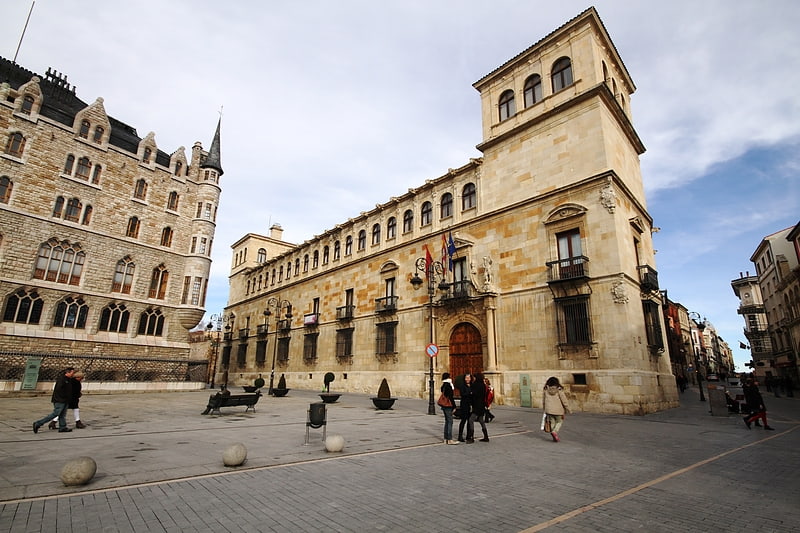
Building in León, Spain. The Palacio de los Guzmanes is a Renaissance building in the city of León; it is the seat of Provincial Government of León.
The architect Rodrigo Gil de Hontañón built the palace in the 16th century, commissioned by the aristocratic family of Guzman, one of the city's powerful and influential families. It is three-story high with square towers at the four corners and is arranged around a two-story courtyard. The façade has a round arches gallery on the top floor.
In "la Plaza de Santo Domingo", the palace stands tall, right next to "la casa de botines" and is one of the prize possessions of "El Casco Viejo (antiguo)" of Leon[5]
Address: Plaza de San Marcelo, León
Basílica de San Isidoro
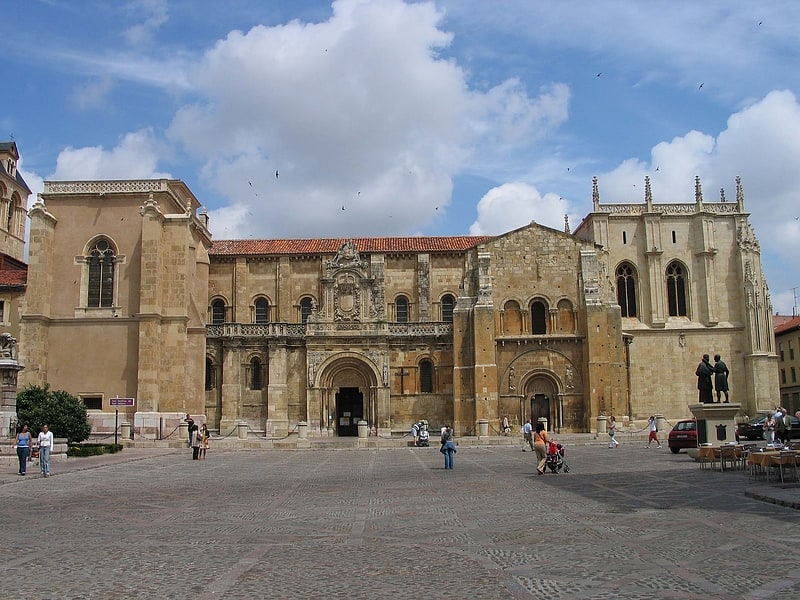
Medieval church with pantheon and museum. The Basílica de San Isidoro de León is a church in León, Spain, located on the site of an ancient Roman temple. Its Christian roots can be traced back to the early 10th century when a monastery for Saint John the Baptist was erected on the grounds.
In 1063 the basilica was rededicated to Saint Isidore of Seville. Isidore was archbishop of Seville, and the most celebrated academic and theologian of Visigothic Spain in the period preceding the Arab invasions. With the agreement of Abbad II al-Mu'tadid, the Muslim ruler of Seville, Isidore's relics were brought to Leon where they could be interred on Christian soil. The tomb of the saint still draws many visitors today. An equestrian statue of Saint Isidore dressed as a Moor-slayer is visible, along with many other sculptures, high on the facade.
In 1188, the Cortes of León were held in here. It was the first sample of modern parliamentarism in the history of Europe, according to the UNESCO and John Keane's book "The Life and Death of Democracy".[6]
Address: Plaza de San Isidoro, 4, 24003 León
San Juan y San Pedro de Renueva
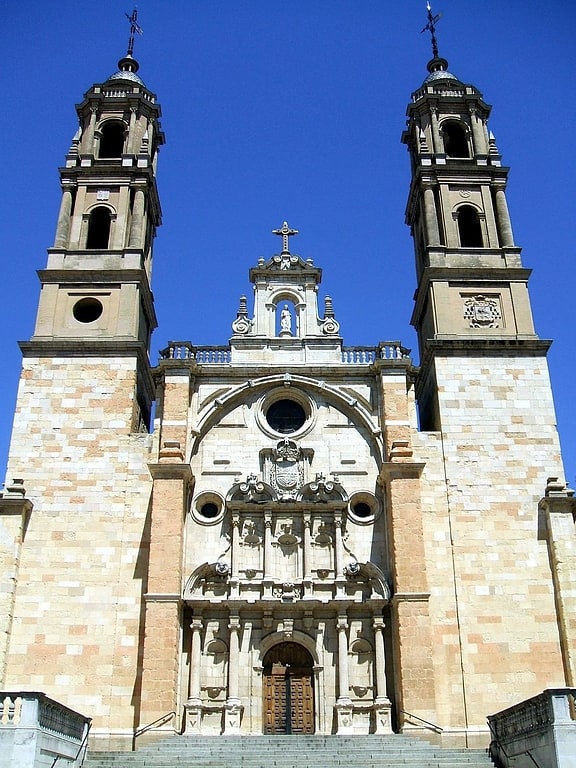
Church in León, Spain. San Juan y San Pedro de Renueva is a church in León, central Spain.
It was built in the mid-20th century in Neo-Renaissance style by will of the local bishop, Luis Almarcha Hernández. Its main artistical feature is the entrance gate, in Baroque style, taken from the ruined monastery of San Pedro de Eslonza, located 22 km outside León in the municipality of Gradefes. It dates from 1711 and was designed by the architect Pedro Martínez de Cardeña. It has three orders, the first characterized by four Ionic columns over pedestals, the second similar to the former, apart the use of Corinthian columns and the narrower length. It is sided by two circular windows, and surmounted by another one over a coat of arms. The façade ha five niches, now empty, but originally housing statues of saints.
The central façade is sided by two slender bell towers dating to the 20th-century edifice.[7]
Address: Calle Eladio Tejedor, 5, 24002 León
San Andrés del Rabanedo

San Andrés del Rabanedo is a municipality located in the Province of León, Castile and León, Spain. According to the 2011 census, the city has a population of 31,562 inhabitants, and is the third largest city in the province after León and Ponferrada. The municipality includes the districts of San Andrés del Rabanedo, Trobajo del Camino, Barrio Pinilla, Villabalter and Ferral del Bernesga.[8]
Museo de León
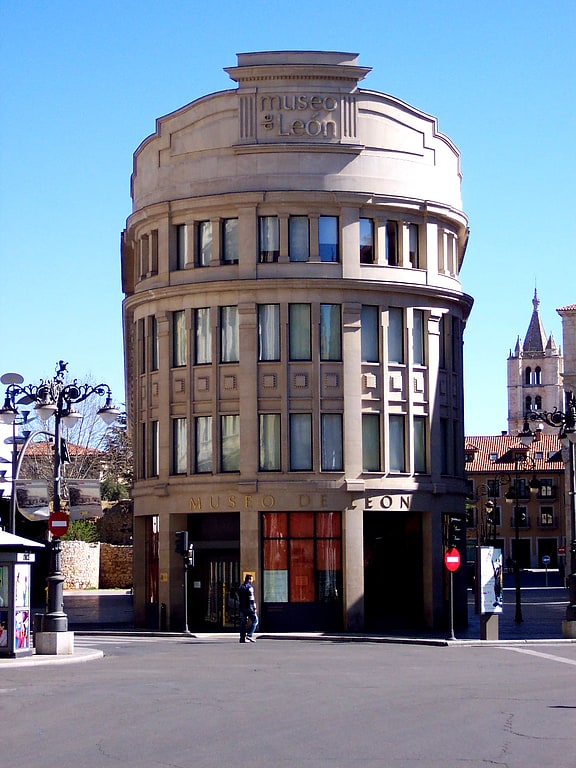
The Museum of León, located in the Plaza de Santo Domingo in the city of León, is the oldest museum in the province and is dedicated to narrating the history of the province through Archaeology, Art and Ethnography. Inaugurated in 1869, although it was founded from the activity of the Provincial Commission of Monuments of León in the context of the 19th century Disentailment, since 2007 it is located in the well-known Pallarés Building, in the centre of the city. It also has two annexes: the Roman Villa of Navatejera, in the town of Navatejera, and the former Convent of San Marcos, which is the historical headquarters of the Museum.
Address: Plaza Santo Domingo 8, 24002 Leon
Auditorio Ciudad de León
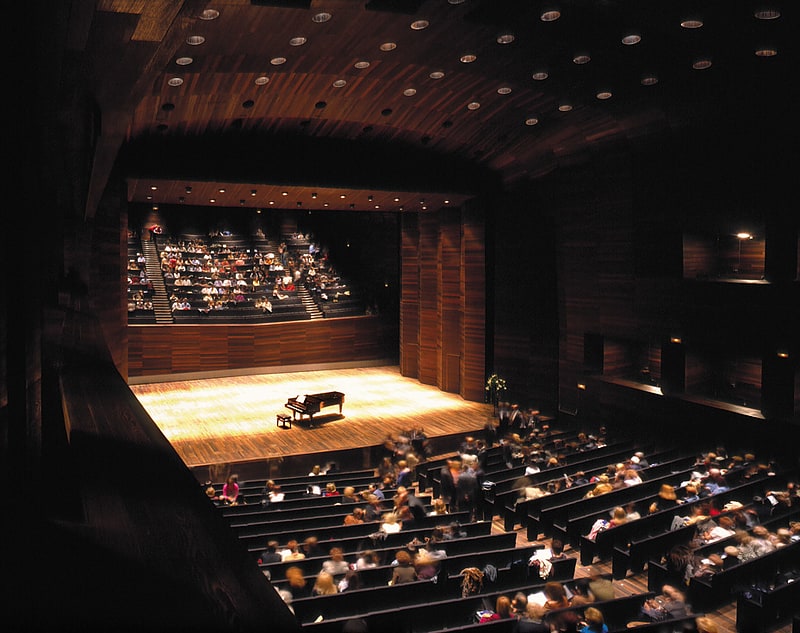
The Auditorio Ciudad de León is the municipal auditorium of the Spanish city of León. It was designed by the Madrid architecture studio Mansilla + Tuñón Arquitectos and inaugurated on 3 May 2002. It was awarded the Spanish Architecture Prize in 2003 and was a finalist in the 2003 Mies van der Rohe Prize for Contemporary Architecture of the European Union and the VII Spanish Biennial of Architecture and Urbanism.
It is located next to other contemporary buildings such as the MUSAC (Museo de Arte Contemporáneo de Castilla y León), designed by the same architects Luis Moreno Mansilla and Emilio Tuñón Álvarez, the building of the Junta de Castilla y León in León or the Europa building. Its cubist façade, an abstract stack of geometric hollows, establishes a dialogue with the nearby Hostal San Marcos, the former Convent of San Marcos.
The auditorium has a main hall, with a capacity varying between 600 and 1200 spectators, and two multi-purpose exhibition halls, which can host artistic performances, conferences and exhibitions.
Address: Av. de los Reyes Leoneses, 4, 24008 León
Parque de Quevedo
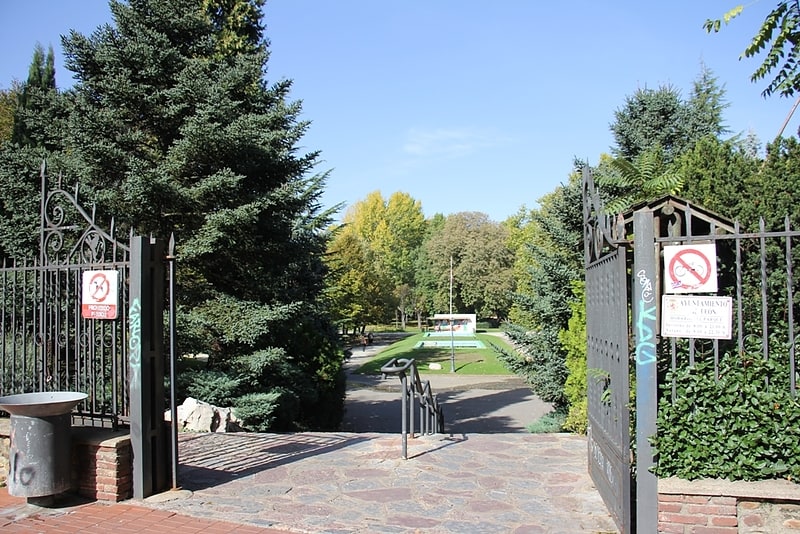
Quevedo Park, is a Spanish urban park of 48,042 m² located in the neighborhood of El Crucero, in the city of León. Its main entrance is located on Avenida de Quevedo, with four other entrances, two on Avenida de la Magdalena and two on Calle Riosol. At each of the entrances are signposted the winter and summer opening hours, telephone numbers of interest, as well as recommendations and prohibitions for all users of this park.
Address: Avenida Quevedo, 24009 Leon